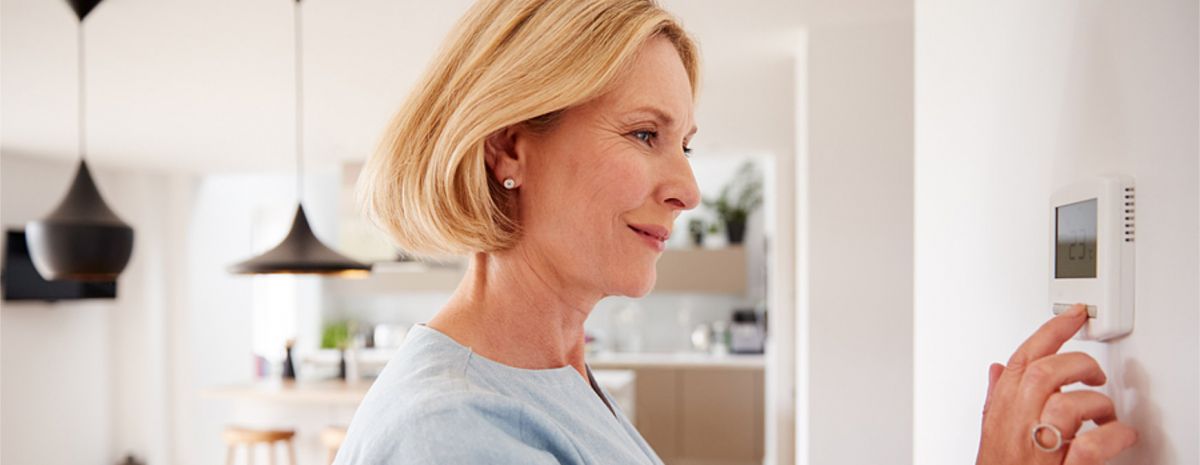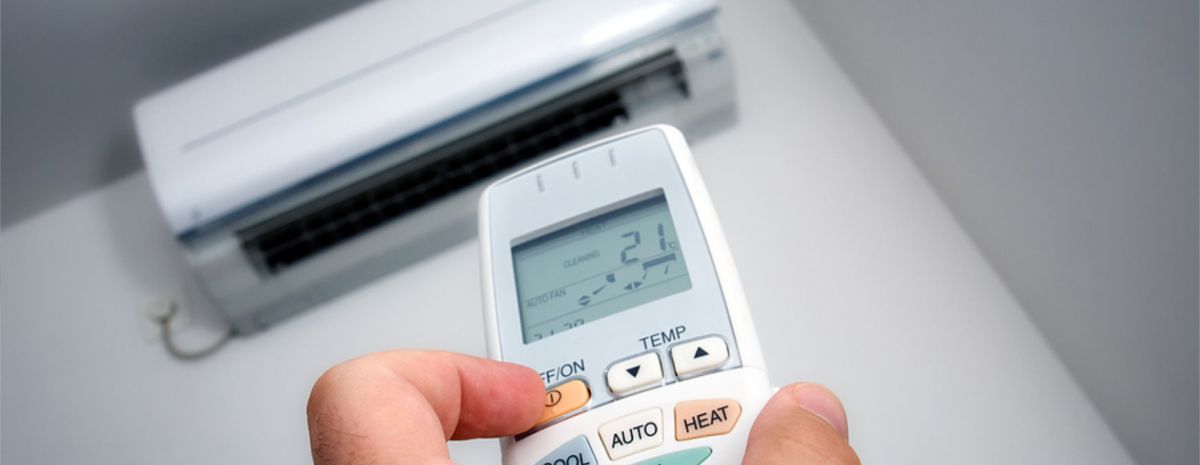
Energy efficiency is often at the forefront of consumers’ minds. Whether they want to reduce their carbon footprint or to save money on their utility bills, the efficiency of their HVAC equipment is likely one of their top concerns.
Once you’ve completed your HVAC training and are working in the field, staying up to date on the latest HVAC equipment innovations can allow you to help your customers make decisions that could lower their heating and cooling costs.
Below are 5 HVAC technologies that could contribute to greater energy efficiency in your customers’ homes.
5 Types of HVAC Equipment that Can Improve Energy Efficiency

1. Smart Thermostats
Smart thermostats can be an excellent way to help your customers take control of their energy use. There is a wide range of smart thermostats on the market that offer a variety of features, but the main one is typically the ability to control your thermostat remotely from any smart device.1
Get Started on the Path to a New Career
Fill out our form to learn how we can help you change your life.
Some models are even designed to learn a homeowner’s habits and make subtle temperature adjustments that can reduce energy use without sacrificing comfort. Others provide reports on energy use so that customers can determine where they are wasting energy and take measures to lower usage.1
To help your customers choose the most efficient model for their home, stay up to date on the latest innovations in smart thermostats.1
2. Motion Sensors
Automating homes’ HVAC systems is the wave of the future, and HVAC technicians can help their customers take full advantage of this new technology.
One way in which a customer’s HVAC system can integrate with their smart home features is through the use of connected motion sensors. These sensors can be triggered when someone is present in the room, signaling the HVAC system to generate the conditioned air necessary to bring the room to a comfortable temperature. When the room is vacant, the sensors can alert the HVAC system, thereby allowing it to conserve energy when it isn’t needed.2
If you have a customer who is tech-savvy or is looking for one of the easiest ways to lower their home energy use, a system that can be controlled with motion activation can be worth the initial investment.2
3. Zoning Systems
If your customers are concerned about wasting energy in rooms that are seldom used, then a zoning system may be a solution.
A zoning system uses a series of dampers that function similarly to valves in the ductwork to control the flow of heated and conditioned air into various sections or the home. Each zone will have its own thermostats that can control the temperatures in that area.3
For rooms that are seldom used, your customers can program the temperature at a lower or higher setting than the frequently used parts of the home, allowing them to save money on their monthly utility bills.3
4. H2AC Packaged Rooftop Systems
For commercial customers looking to conserve energy and reduce their overhead costs, an H2AC packaged rooftop solution may be the answer.4
These systems integrate both the air and water systems in the building, allowing them to work together to produce a comfortable environment while using as little energy as possible.
The technology works by using the heat removed from the air during the air conditioning process to preheat the water for the fixtures in the building. This mode can be activated whenever the opportunity to preheat the water presents itself.4
5. Dual-Fuel Heat Pumps
Heat pumps have been known for improving efficiency, but they are often used in temperate climates. With the introduction of dual-fuel heat pumps, customers in a wider range of geographic locations could benefit.5
These systems are designed to use two energy sources to allow for better comfort in areas with higher temperature fluctuations: an electric heat pump and a gas furnace. When the temperature outside is below 35 degrees, the gas furnace will heat their home. Once the temperature rises above 35 degrees, the heat pump will kick in, significantly reducing overall energy usage.5
If you have customers in climates where traditional heat pumps would not be prudent, a dual-fuel heat pump can allow them to stay comfortable while reducing costs.5
Tips for Greater Energy Savings this Summer
Knowing the latest HVAC efficiency innovations can help you help your customers save on their utility bills while lowering their carbon footprint.
In addition to recommending new HVAC technologies, you can offer energy saving tips customers can use this summer to keep cool and cut down on costs.
Additional Sources
1https://www.achrnews.com/articles/127462-home-automation-products-gaining-hvac-industry-traction
2https://www.primexvents.com/5-hvac-sensors-you-need-to-know-about/
3https://www.hvac.com/faq/zoning-system/
4https://www.rheem.co˜m/innovations/innovation_commercial/commercial-h2ac-innovation/
5https://www.energy.gov/energysaver/heat-and-cool/heat-pump-systems
This blog has been labeled as archived as it may no longer contain the most up-to-date data. For a list of all current blog posts, please visit our blog homepage at https://www.rsi.edu/blog/

